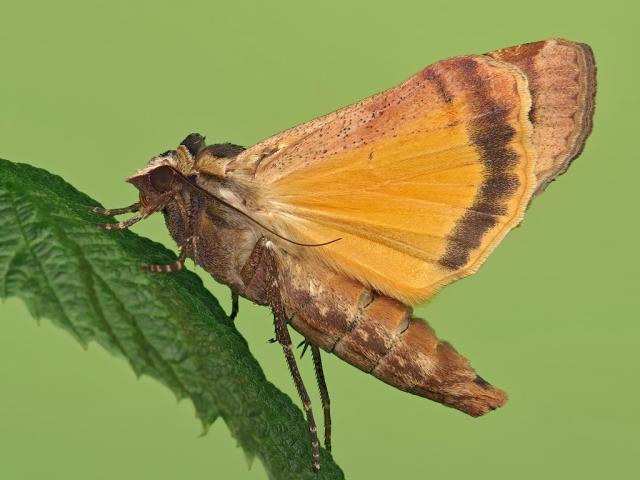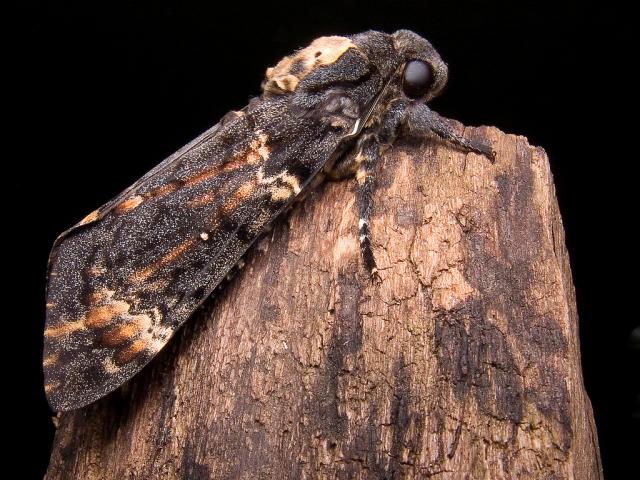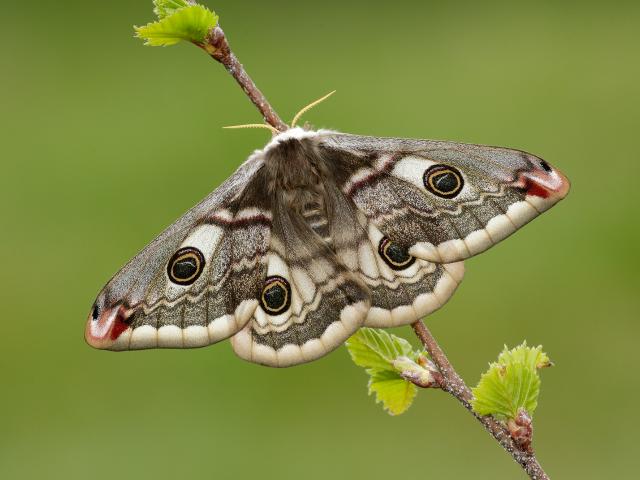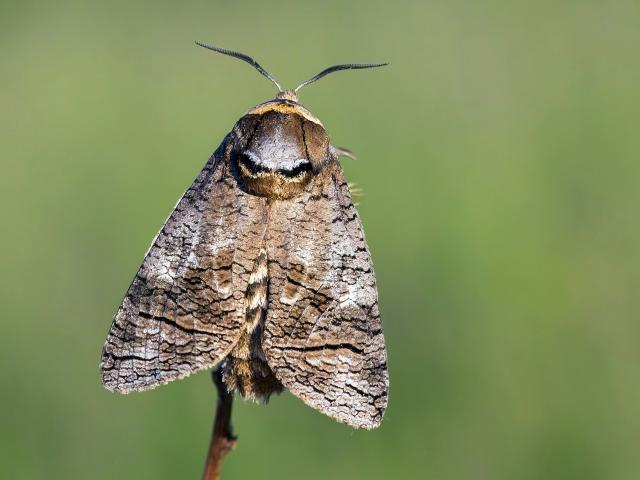Do you know the tricks moths use to avoid being eaten by bats? Are you aware that moths can smell each other over long distances? And do you know how a moth steals honey from a bee hive without being stung?

Bats are major predators of moths. They find moths in the dark through echolocation, by emitting high pitched squeaks and listening for the echo. In response to this threat, many night-flying moths have evolved ear-like organs which can pick up the squeaks of the bats and allow them to take evasive action. They may escape by changing direction suddenly, or even by performing aerial loops and spirals, and if the bat is very close they may simply shut their wings and plummet earthwards.
Other moths go further and actually make their own squeaking sounds to confuse the bats. And some members of the tiger moth family, which in the daytime use bright colours to warn predators that they taste bitter, may use squeaks in the dark to warn bats of their bad taste.

The Death's-head Hawk-moth uses squeaks to steal honey. It's a large, heavy moth, so flying uses a lot of energy and it needs to refuel. Because bees will sting to death any thief entering their hive, this amazing moth makes squeaks which apparently sound like those of a queen bee, fooling the worker bees into letting it come into their hive and eat their honey. However, this isn't the only way moths pretend to be bees; Bee Hawk-moths have evolved to look just like bumble bees, so that predators think they can sting and will leave them alone.

Not only can moths hear, they can smell scents too. Female moths produce scents called pheromones to attract males, and the males use their antennae to pick up this scent as it wafts on the air. This is why the antennae of many male moths are feathered, to increase their surface area and make them more sensitive. The amount of scent a female moth can produce must be quite tiny, and it quickly becomes diluted out in the open air. Yet male Emperor moths can often be seen following the scent towards females, and have been known to find them over distances of up to five miles.

Moth caterpillars can also do surprising things. The caterpillar of the Goat Moth doesn't eat leaves, but actually burrows into a tree trunk and eats the wood. Digesting wood is a slow process, so the caterpillar takes four years to reach full size. It then emerges from a hole near the base of the tree and, as the caterpillar is very large (up to 10cm long) and many caterpillars use the same tree, these holes can be quite noticeable. It is also said that they can be recognised by a goat-like smell that gives the moth its name.
Another moth with an amazing story is a British species that has become famous around the world, the Peppered Moth.

